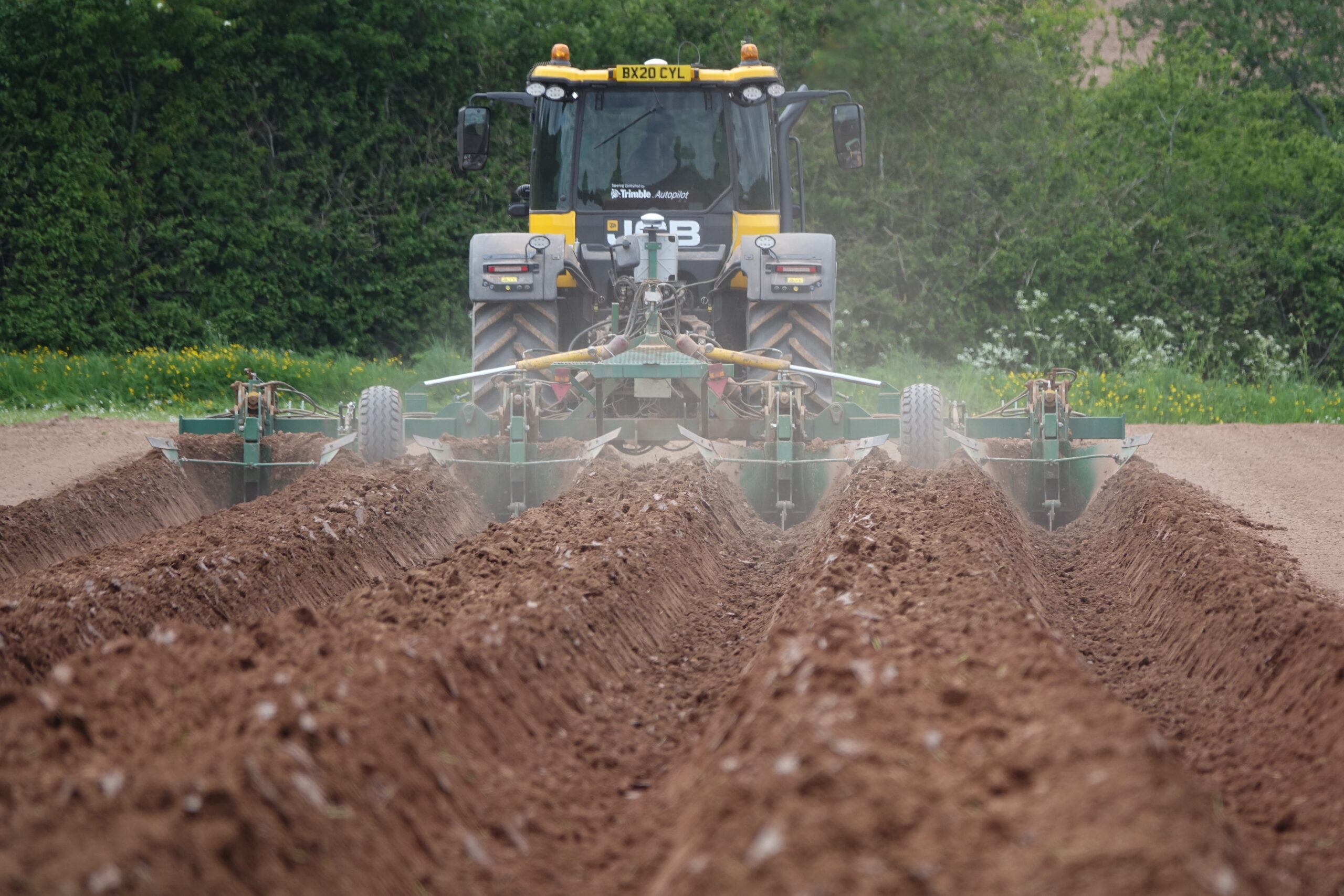
Specialist guidance hire fixes costs for 3 years
During 2019 out team were approached with a request from a machinery dealer who had agreed to supply a machine to their customer for 3 years, swapping it out after each season before replenishing for the following season with a new machine. The end user required equipment for the arable drilling and potato planting in their rotation and the equipment dealer entrusted our team to advise what system would be best suited for this application.
After consulting with the customer it was agreed that the following equipment would deliver their requirements whilst being cost effective to install/ remove a total of 6 times during the contract;
Vehicle Steering: Front axle
- TMX-2050 display, AG-25 receiver and TM-200
- FMX+ Application license
- Trimble NAV III Controller
Vehicle Steering: Rear axle
- 1 x Trimble NAV III controller
- Trimble True Tracker implement steering
- 2nd Ag-25 receiver and radio
ISOBUS Implement control
- GFX-750 display
- ISOBUS Completion cabling
On delivery of the machine to the dealership we were notified of the PDI process and its expected completion, our team organised all equipment from the hire fleet with purchase of a specific platform kit for this vehicle. Coordinating with the dealership our engineers arrived on site with the machine and began the installation process under supervision from the customer which allowed continual knowledge transfer between all parties, using on site facilities to fabricate custom bracketry for our hardware to be mounted. On completion of the install our service manager took to the field to complete the calibration and set up of the vehicle, once satisfied with the initial steering the 3 row potato ridger was mounted to complete the tuning process.
The front axle steering was a traditional setup using the NAV III controller and Trimble Autopilot to control the existing steering valve. In order to control the rear axle independently we were required to install a Trimble TrueTracker system, usually associated with implement steering the concept would be the same, except this time it was the second axle of the machine we were keeping on the same A-B line. Once the front axle was steering as expected, we configured all of the dimensions and performance to allow the second axle to come on line and by utilising the active implement guidance the independent steering vales were working as expected.
Finally the end customer had purchased a new seed drill which was ISOBUS compliant and would be pulled by this same tractor ahead of ridging. After discussion with our team the drill came without a ISOBUS terminal as we were able to utilise Trimble technology to not only monitor the drill, but also control it which has a financial saving to the customer and reduces clutter in the cab. The GFX 750 display was chosen as the ISOBUS terminal as the drill not only had section control, but it would be using variable rate prescriptions across multiple products, the larger screen allows more to be seen by the operator. Engineers installed the GFX 750 display at a location preferred by the operator, time was then spent completing the machines ISOBUS circuit and configuring the terminal with the drill. Never just ‘plug & play’, after some time understanding communication layouts the GFX 750 was successfully in control of the implement.
During the first weeks there were some return visits to the vehicle as performance was not quite as expected by the customer, there appeared to be drift from the 2.5cm A-B lines being put down by CenterPoint RTX Fast. On investigation our engineers found potential issue with the implement set up when ridging, not immediately obvious was an issue with the stabilisers being tight which essentially allowed the implement to steer the tractor. Following a shakerator the potato ridger would occasionally pick up the same path as a shakerator leg and follow the path of least resistance, this in turn would pull the tractor off course causing issues with A-B line repeatability. Adjustments were made and as a result of measuring ~100m width, we found the final A-B line only be be off from the original pass by approx 6cm, all parties were happy with the result.
Since the first season our team have removed the kit twice and re-installed to new vehicles as the contract begins, making sure there is full coordination between us and the dealer so there is minimal downtime when the machine arrives on site. Both the end user and the dealer have benefitted from this agreement by being able to fix costs for high specification technology, but also having the flexibility to apply this technology to more than one machine with minimal fuss.
If you have a requirement for technology but are looking to fix your costs, or you would benefit from free impartial advice for a particular scenario or contract, get in touch with our team and let us help you get more from guidance.
